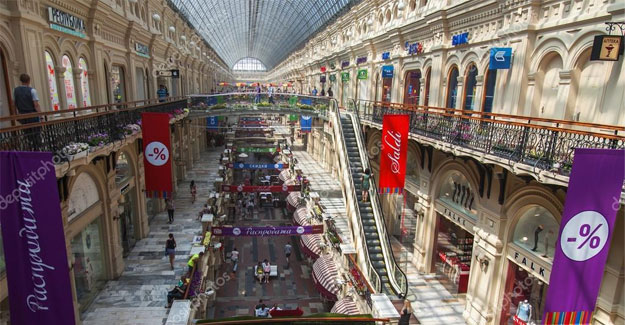
Weather Plays Truant With Summer Sales In Russia
With its July the coldest for 100 years, retailers across Russia have been obliged to put much of their summer stock on ice. As temperatures have tumbled, consumers have turned their backs on such seasonal staples as T-shirts, shorts and sandals, while demand for warm knitwear and robust footwear has put in a somewhat premature appearance. With "the winds are blowing in from Siberia" an oft-heard phrase, weekend dacha dashes are off the agenda, while restaurant terraces remain unoccupied and the sun is setting far earlier than its 11pm summertime norm. August was no different. This disruption to the country's weather patterns has, of course, occasioned a subsequent disruption to the sales schedules of Russia's high street and online retailers. The first three weeks of July, for instance, saw sales of sandals and summer footwear down by almost 30% year-on-year, while swimwear and light robes fell by 20% and various summer collections suffered a similar shortfall. As to where all the spend is going, for the same period, sales of rubber boots, for one, were up by 500%. Indeed, the best-selling items were (strangely enough) bright yellow rubber boots, followed by hoodies, sweatshirts and children's waterproof jumpsuits. While the above trends are largely related to the mass market, the more affluent consumers - those who favour the likes of LaModa & Wildberries - made equally striking diversions from their normal purchase patterns. This saw the sale of high-end overcoats surge by 100%, leather jackets by 70% and premium sweatshirts / hoodies by 50%. Even among this demographic, demand for rubber boots spiked, while the cosier denim and knitwear garments on offer from such relatively pricey retailers as Love Republic, Befree and Zarina flew off the shelves as many well-off Russians prepared to settle in and see out the sub-par summer at home. Overall, though, the situation has not proved wholly disastrous for retailers. While summer collections have largely been snubbed, spring stragglers have been snapped up and early arriving autumn items have found a ready welcome. Among those quick to capitalise on this was TsUM, one of Moscow's leading department stores, which tactically brought forward the launch of its autumn collection by a month. Initial reports suggest that sales of warmer formal and casual garments, as well as insulated footwear, are brisk, with online purchases notably up. Less flexibility, however, is available to the hypermarkets and DIY outlets that stock the majority of Russia's picnicking / barbecuing and outdoor activity products. With 70% of such items sold in the mid-May to mid-August window, this year has seen retailers lumbered with a huge array of goods that are clearly surplus to current requirements, including grills, charcoal, tents, coolers, deckchairs and mosquito repellents. Many have initiated heavily promoted flash sales in a bid to clear shelves, but with only limited success. Many market analysts believe that Russian retailers will be reluctant to be saddled with their summer stock for too long, preferring instead to sell on their inventory at knockdown prices to one of the country's discounter chains, such as Fix Price or Familia. There is also the option of shifting product lines to Kazakhstan, a fellow member of the Eurasian Economic Union and an established trade hub for much of Central Asia. It could be a canny move given that Central Asia typically remains hot - and in need of summer essentials - until mid-November. For Indian manufacturers and distributors, all of the above is worth bearing in mind when planning for the next 12 months or so. In particular, the Central Asian markets are likely to have a glut of competitively priced summer items to work through, while Russian retailers will be hesitant to commit to warm-weather products and may still have a high level of residual stock come summer 2020.
Textile Excellence
If you wish to Subscribe to Textile Excellence Print Edition, kindly fill in the below form and we shall get back to you with details.








